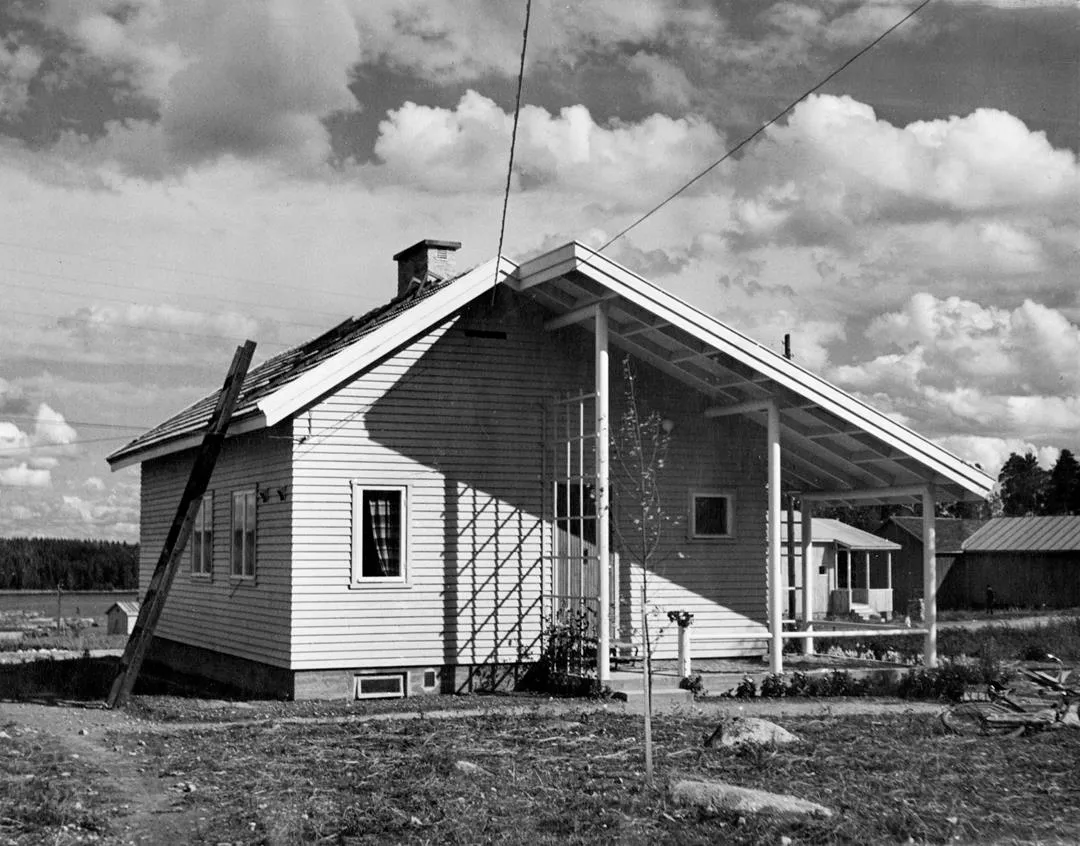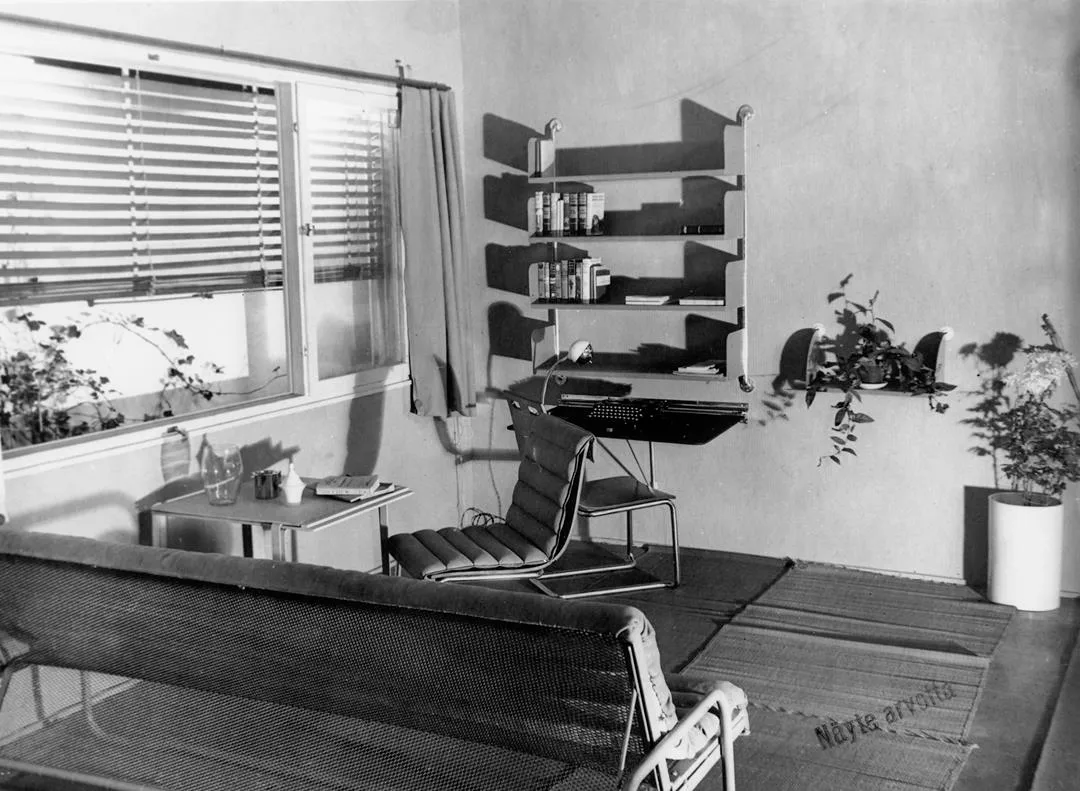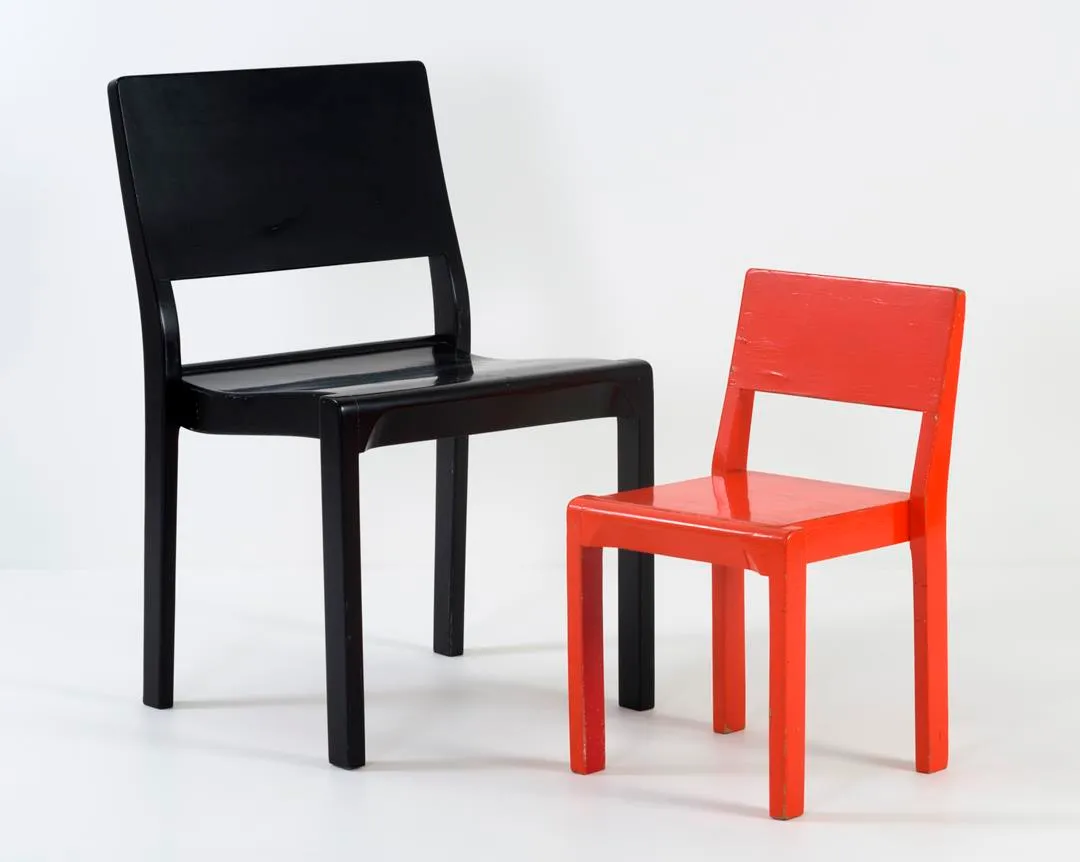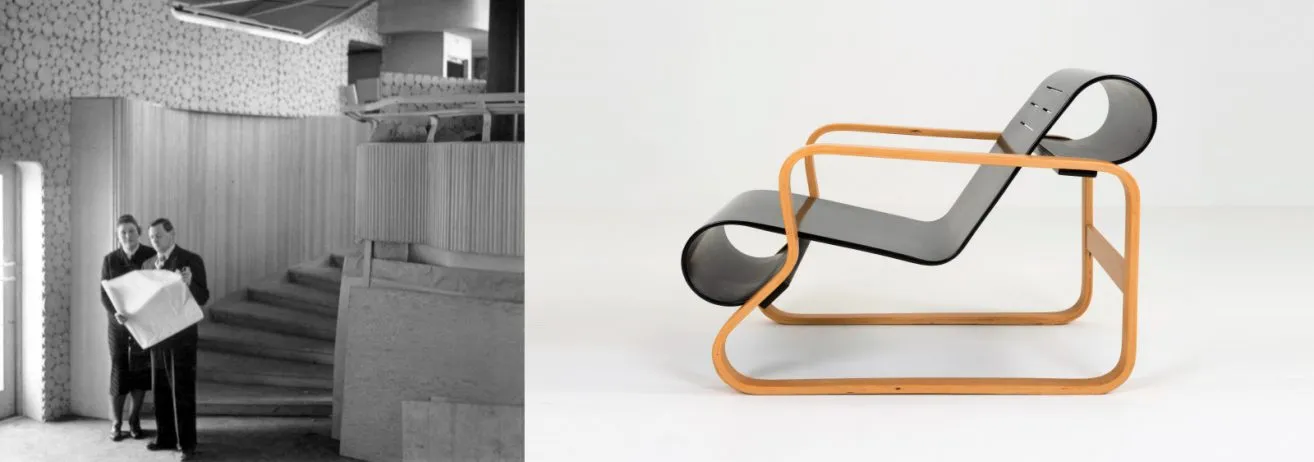The Alvar & Aino Aalto – Shared Visions exhibition assembled for Tokyo’s Setagaya Art Museum is a portrait of Aino (1894–1949) and Alvar Aalto’s (1898–1976) multi-faceted lives’ work in architecture and design. This wide-ranging showcase of the central themes of the Aaltos’ design work is the third of a four-part exhibition collaboration between the Alvar Aalto Foundation and the Japanese Takenaka Scholarship Foundation.

Pre-fabricated standard houses in 1940´s in Könönpelto residential are in Varkaus, Finland. Photo Foto Roos, Alvar Aalto Foundation.
“The exhibition encapsulates several important ideas about home design, the basic requirements for a good everyday life, and a flexible, modern mode of furnishing. Although the objects were designed in the 1930s, the themes underpinning their design are still relevant in both Japan and Finland. It is interesting to note that the Aaltos were ahead of their time and did pioneering work on themes with global appeal,” says CEO of the Alvar Aalto Foundation Tommi Lindh.
The exhibition tells us about the seamless cooperation between the architect couple, and emphasises that Aino and Alvar Aalto were equal working partners – at a time when few women were part of the architectural profession. The Aaltos shared a view of architecture as an all-embracing subdiscipline of design, spanning furniture, glassware, and on to interiors and spatial arrangements that make everyday life easier. In the 1920s and 1930s, their special interests included studies of issues involved in housing.
Textbook examples of residential design are the interiors built for this exhibition taken from the furnishings for The Rationalization of the Small Dwelling exhibition at Helsinki Exhibition Fair Hall in 1930 and The Aalto House (1935–36) in Munkkiniemi, Helsinki. The innovative wood-bending experiments that underpinned the furniture design and the development work on manufacturing mass-produced furniture, not forgetting the diverse history of Artek, founded in 1935, also play an important role in the exhibition.
For The Rationalization of the Small Dwelling the Aaltos created a model apartment that was furnished with moveable, mass-produced furniture. In the design work, practical, well-lit spatial arrangements for small dwellings were combined with the broader question of architecture as a tool for social change. Modern apartment design was seen as a facilitator of everyday life and a promoter of equality, with women increasingly switching to work outside the home. In the architect’s family home, on the other hand, the family’s daily life and work overlapped, with functional needs combined with broader housing-design experiences. The private and public side of the building were also visible in the surrounding garden, which was an important part of the whole.
“There has long been a great deal of interest in Aino and Alvar Aalto’s production in Japan. The Japanese public particularly responds to the simplicity, timelessness and closeness to nature of the Aalto’s architecture and design. These themes also emerge particularly clearly today, when we are considering the criteria for good, high-quality housing and flexible use of space,” says Alvar Aalto Foundation´s Curator Timo Riekko who was in charge of producing the exhibition.

The Living room designed by Aino and Alvar Aalto for the Rationalization of the Small Dwelling exhibition at the Helsinki Exhibition Hall in 1930. Photo Alvar Aalto Foundation.
Most of the furniture, photographs and drawings in the exhibition and in its cosy interiors are from the Alvar Aalto Foundation’s design collections and its drawing and photograph archive. Some previously unseen works have also been acquired on loan from Aino and Alvar Aalto’s descendants.
“Collaboration with the Takenaka Scholarship Foundation began in 2016 with the Aino Aalto exhibition in Tokyo. Following this successful cooperation, it was a natural step to start jointly creating a more extensive exhibition. This is a major contribution to making Aalto’s production better known internationally: it is the Alvar Aalto Foundation’s biggest collection loan this century, with 115 objects, 57 drawings and five archive documents in all,” says Riekko.
The first in the series of exhibitions, Aino & Alvar Aalto – Shared Visions. Small is beautiful – ideal homes for everyone, was shown at Gallery A-quad in winter 2019–2020 and the second, Aino and Alvar Aalto. Shared Visions. Innovations in Wood Bending Technology & Design of Furniture, at the Takenaka Carpentry Tools Museum in spring 2020. The exhibition now being shown combines the two previous exhibitions into a whole that will be at the Setagaya Art Museum in Tokyo until June 20, 2021, where you can visit by purchasing tickets in advance. The exhibition will go on to Hyogo Prefectural Art Museum in Kobe, July 3 to August 29, 2021.

Chair model 611 (des. 1929) and and the children´s version of the chair (des. 1938). Photo Maija Holma, Alvar Aalto Foundation.
The exhibition has been produced in a collaboration between the Alvar Aalto Foundation, Takenaka Scholarship Foundation, and Alvar Aalto’s descendants.
Read more about the exhibition at the web site of the Setagaya Art Museum.
Further information:
Alvar Aalto Foundation
CEO Tommi Lindh
+358 44 562 1625
tommi.lindh@alvaraalto.fi
Curator Timo Riekko
+358 400 354 268
timo.riekko@alvaraalto.fi


